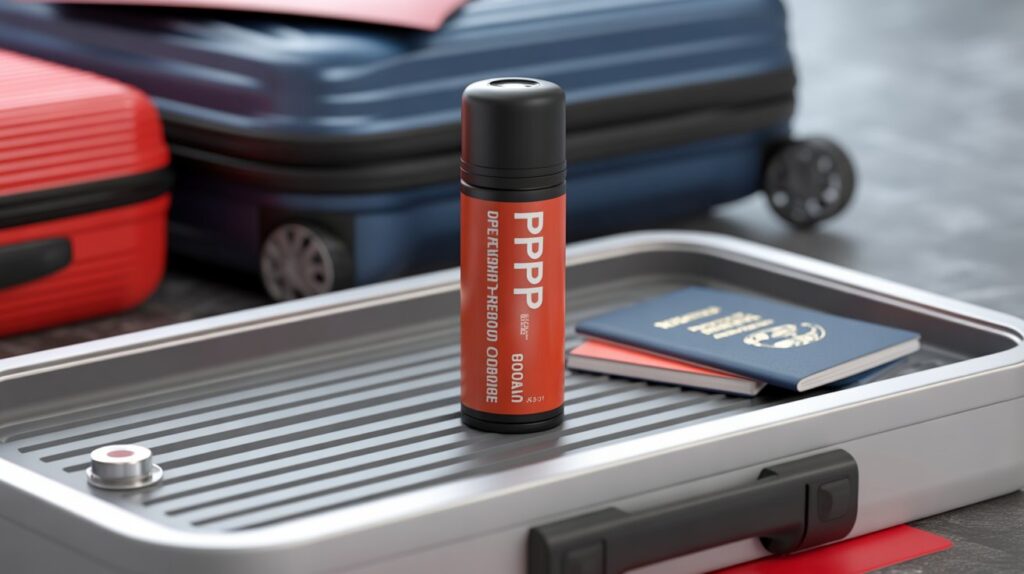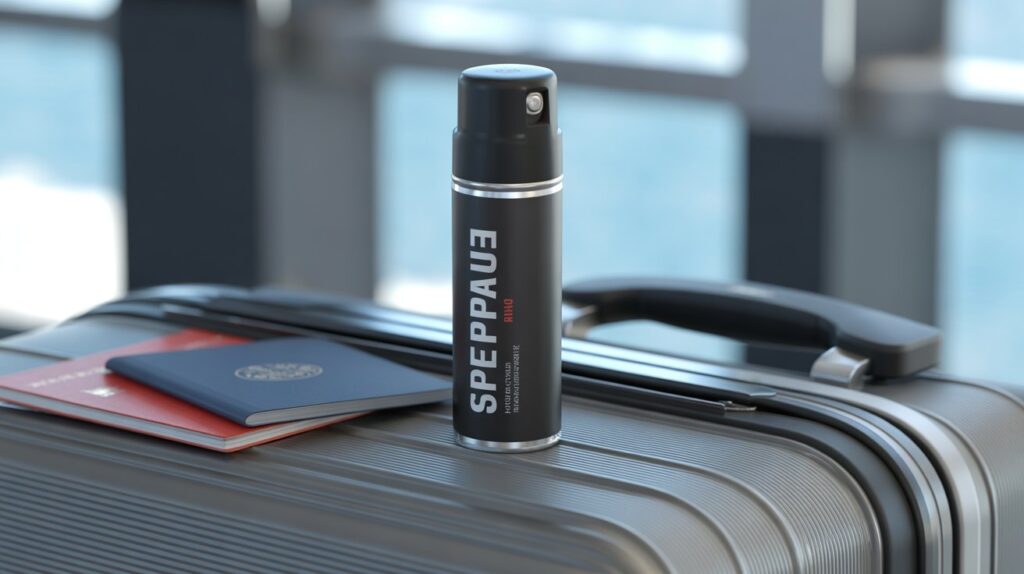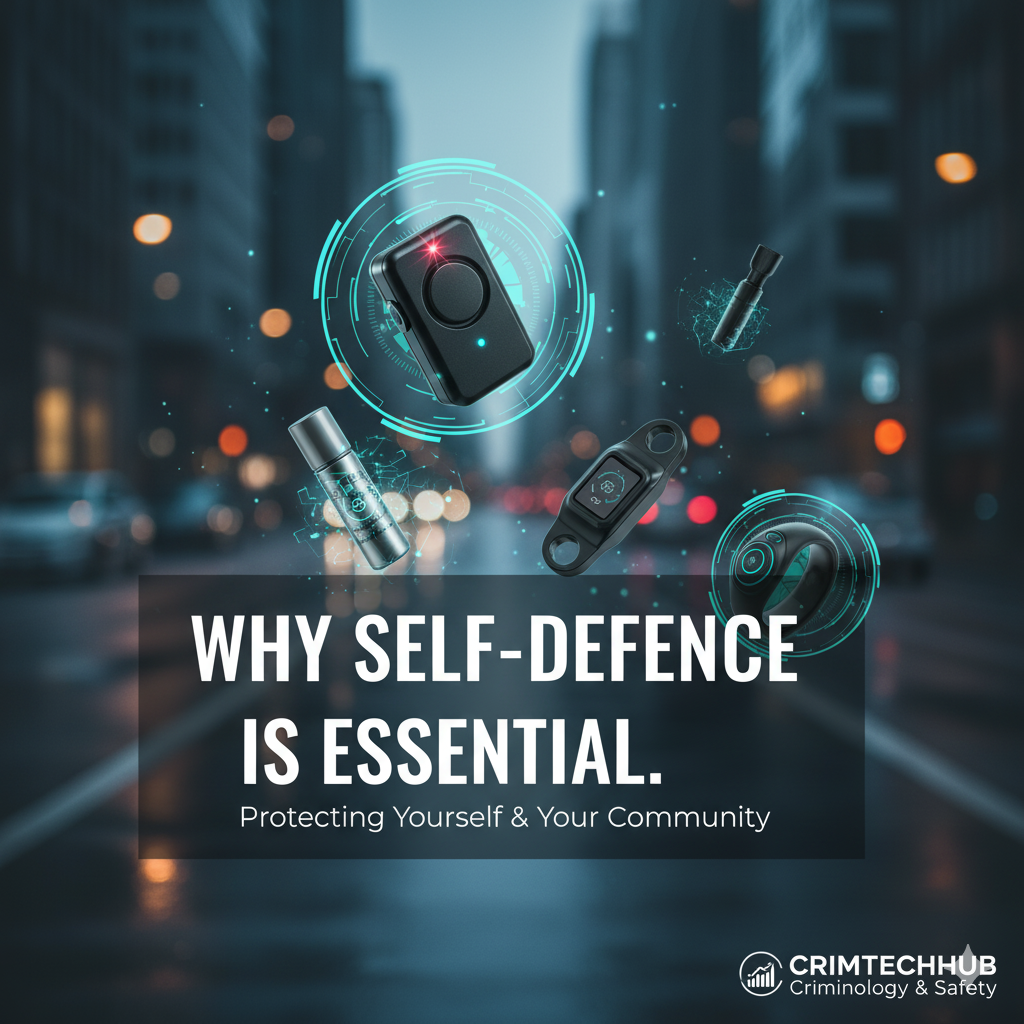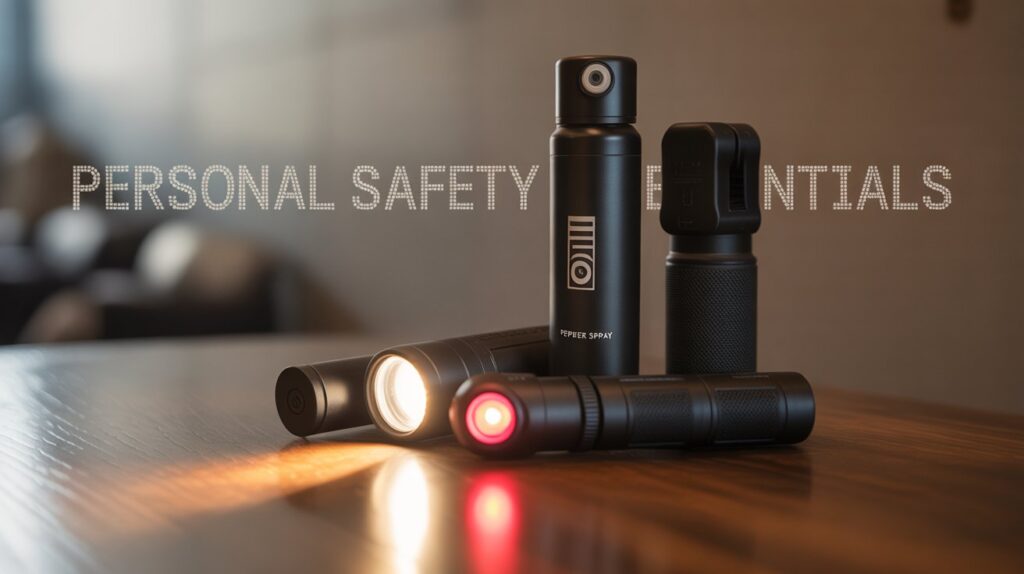
1. Introduction
Can you take pepper spray on an airplane? It’s a question many travelers ask when preparing for a trip with personal safety in mind. Air travel security is governed by strict TSA regulations, and understanding these rules is essential to avoid confiscation or legal trouble.
In this detailed 2025 guide, you’ll learn exactly what the TSA allows, which airline policies apply, and how to carry your self-defense tools safely and legally. Whether you’re flying within the U.S. or internationally, this expert guide provides everything you need to know to stay protected and compliant throughout your journey.
You can also explore more about Pepper spray and discover its different types such as fogger, gel, foam, and stream for better self-defense understanding.
Table of Contents
2. Understanding TSA Rules for Pepper Spray
Before packing any self-defense tool, it’s crucial to understand how the TSA (Transportation Security Administration) classifies items like pepper spray. The TSA’s primary goal is to ensure safety inside the aircraft, which means that only specific items meeting their safety requirements are permitted.
When it comes to can you take pepper spray on an airplane, TSA rules are quite strict. Pepper spray is considered a hazardous item because it contains chemicals that can irritate eyes, skin, and airways. As a result, it’s not allowed in carry-on luggage under most circumstances.
However, the TSA does allow limited amounts of pepper spray in checked baggage — but only if it meets certain conditions. For example, the container must not exceed 4 ounces (118 ml), and it must have a safety mechanism to prevent accidental discharge. Containers larger than this or missing a safety lock are strictly prohibited.
It’s also important to note that some airlines have stricter policies than TSA, meaning they can refuse pepper spray altogether, even in checked bags. That’s why travelers should always verify both TSA and airline-specific regulations before flying.
By understanding these basic rules, you can avoid complications at the airport and ensure that your journey remains smooth and stress-free.
3. Can You Take Pepper Spray in Carry-On Luggage?
When asking can you take pepper spray on an airplane, most travelers want to know if it’s allowed in their carry-on bag. The simple answer is no — the TSA strictly prohibits pepper spray in carry-on luggage for safety reasons.
Pepper spray is classified as a restricted self-defense weapon because it contains pressurized chemicals that could accidentally discharge and harm passengers or crew in a confined cabin. Even a small release can cause breathing issues or eye irritation, which is why it’s not permitted inside the aircraft cabin.
If you attempt to bring pepper spray in your carry-on, it will be confiscated during security screening, and in some cases, you could face penalties or delays. The TSA recommends travelers leave all sprays in their checked bags — if allowed — and never attempt to conceal them in personal items like purses or laptop cases.
It’s also worth noting that airline staff and security officers have the final say. Even if your pepper spray meets TSA guidelines, they can still deny it for onboard safety. Always double-check the latest TSA updates and your airline’s policy before packing.
In short, pepper spray is not allowed in carry-on luggage, and carrying it through security may cause serious inconvenience. The safest option is to store it correctly in your checked baggage following all TSA requirements.

4. Can You Take Pepper Spray in Checked Baggage?
If you’re wondering can you take pepper spray on an airplane in your checked luggage, the answer is yes—but with strict conditions. The TSA does allow passengers to pack one small container of pepper spray in their checked bag, but only if it meets their official safety guidelines.
The maximum size limit is 4 ounces (118 ml) per container, and it must include a safety mechanism to prevent accidental discharge. This lock is crucial to ensure the spray doesn’t leak or trigger during baggage handling. Any container larger than 4 ounces, or one without a safety lock, will be confiscated by security.
Additionally, pepper sprays containing more than 2% tear gas (CS or CN) are completely prohibited, regardless of size. This is to ensure that only standard self-defense sprays, not military-grade irritants, are transported.
It’s also smart to check with your specific airline before flying. Some airlines, especially international carriers, have stricter policies and may not allow pepper spray at all—even if TSA regulations permit it. Always review both the TSA website and your airline’s policy page to avoid issues at check-in.
To stay safe and compliant:
- Use travel-sized pepper spray bottles (under 4 oz).
- Ensure your spray has a safety cap or lock.
- Pack it securely in a plastic bag within your checked suitcase.
Following these steps ensures you can travel responsibly while keeping your self-defense tool packed safely and legally.
5. International Flights and Airline-Specific Regulations
When it comes to can you take pepper spray on an airplane for international travel, the rules can vary widely depending on the country and the airline. While the TSA sets regulations for flights departing from the United States, other countries may have completely different laws regarding pepper spray possession and transport.
For example, in Canada and the United Kingdom, pepper spray is classified as a prohibited weapon, meaning it’s illegal to carry—even in checked luggage. Similarly, many European and Asian airlines completely ban pepper spray, regardless of TSA approval. That means even if you depart from the U.S. with it legally packed, it could be confiscated upon arrival in another country.
Airlines also have their own safety rules. Carriers like Delta, United, and American Airlines typically follow TSA guidelines, allowing pepper spray in checked bags with restrictions. However, some international airlines—such as Emirates, Qatar Airways, and British Airways—prohibit it altogether due to local laws and international flight safety agreements.
Before flying abroad, always:
- Check the destination country’s laws on self-defense sprays.
- Read your airline’s baggage policy carefully.
- Avoid carrying pepper spray on connecting flights in countries where it’s banned.
Doing your homework can save you from fines, confiscation, or legal trouble overseas. When in doubt, it’s best to leave pepper spray at home and carry TSA-approved personal safety tools instead.
6. Safe Alternatives to Carry Instead of Pepper Spray
If you’re wondering can you take pepper spray on an airplane and realize it’s restricted or banned, don’t worry — there are several TSA-approved alternatives that can help keep you safe while traveling. These tools are easy to pack, allowed in carry-on bags, and still provide peace of mind during your trip.
1. Personal Safety Alarms
These small devices emit a loud siren when activated, drawing attention in emergencies. They’re legal in both carry-on and checked baggage, making them an ideal travel-friendly replacement for pepper spray.
2. Tactical Flashlights
Compact and durable, tactical flashlights can temporarily blind an attacker with bright light. Many models are designed for self-defense and can be safely carried on planes without issue.
3. Self-Defense Keychains
TSA-approved soft keychain tools (without blades or sharp edges) are practical and easy to carry. Avoid hard metal or pointed designs, as those might be confiscated at security.
4. Whistles and Personal Alarms Combo
A whistle combined with a personal alarm adds another layer of safety, useful in airports, hotels, and public areas.
5. Mobile Safety Apps
Modern safety apps can instantly share your location with trusted contacts or local authorities. This digital option works anywhere and requires no special permission from TSA.
These alternatives help travelers stay safe without violating airport security laws. Whether you’re flying locally or abroad, sticking to approved safety items ensures you remain both protected and compliant.

7. Tips for Traveling with Self-Defense Items
Even though can you take pepper spray on an airplane has clear rules, travelers often carry other self-defense tools that also need to follow TSA and airline regulations. Packing these items properly can prevent delays and make your airport experience smooth and stress-free.
Here are some useful tips to follow when traveling with safety or self-defense items:
1. Check TSA and Airline Policies Before You Fly
Every airline can have slightly different rules. Before packing, visit both the TSA’s official website and your airline’s baggage policy page to confirm what’s allowed in carry-on and checked luggage.
2. Always Declare Restricted Items at Check-In
If you’re carrying any self-defense tools in your checked baggage, it’s wise to declare them during check-in. This prevents misunderstandings during security scans and avoids potential fines.
3. Use Proper Packaging
Store sprays or safety tools in sealed plastic bags to prevent leaks or accidental activation. Proper packaging keeps your luggage clean and avoids damage to other belongings.
4. Avoid Concealing Self-Defense Items
Never hide self-defense items in personal belongings like makeup bags or electronics. TSA scanners can easily detect them, and concealment may be seen as a violation.
5. Carry Legal Alternatives When Traveling Internationally
If you’re flying abroad where pepper spray is banned, switch to approved options like personal alarms, flashlights, or safety keychains. They’re travel-safe and equally effective in emergencies.
Following these tips ensures that your trip stays legal, safe, and stress-free. The key is to always travel responsibly and stay informed about what’s allowed onboard.
FAQs
1. Can you take pepper spray on an airplane in your carry-on bag?
No, you cannot take pepper spray in your carry-on bag. The TSA strictly prohibits it in the cabin because it poses a safety risk to passengers and crew.
2. Can you take pepper spray on an airplane in checked luggage?
Yes, but under specific TSA conditions. The container must be under 4 ounces (118 ml) and have a safety lock to prevent accidental discharge. Anything larger or without a lock is not allowed.
3. Are international airlines different about pepper spray rules?
Yes. Many international airlines and countries completely ban pepper spray, even in checked baggage. Always check local laws and your airline’s policies before flying abroad.
4. What happens if TSA finds pepper spray in my carry-on?
If TSA discovers pepper spray in your carry-on, it will be confiscated, and you may face delays or fines depending on airport security rules. It’s best to pack it properly in checked baggage.
5. What are safer alternatives to carry instead of pepper spray?
You can bring personal safety alarms, tactical flashlights, or self-defense keychains. These are TSA-approved and ideal for travelers who want protection without breaking security laws.
8. Conclusion
So, can you take pepper spray on an airplane? The answer depends on how and where you pack it. While the TSA allows one small container (under 4 ounces) in checked baggage with a safety lock, it’s completely prohibited in carry-on luggage. Always check both TSA guidelines and your airline’s policy before flying, as some carriers have stricter rules.
If you’re traveling internationally, remember that many countries treat pepper spray as an illegal weapon, so it’s best to leave it at home and carry TSA-approved safety alternatives instead.
Understanding and following these regulations will help you avoid fines, confiscation, or unnecessary airport stress. By planning ahead, you can travel safely, legally, and confidently—no matter your destination.





